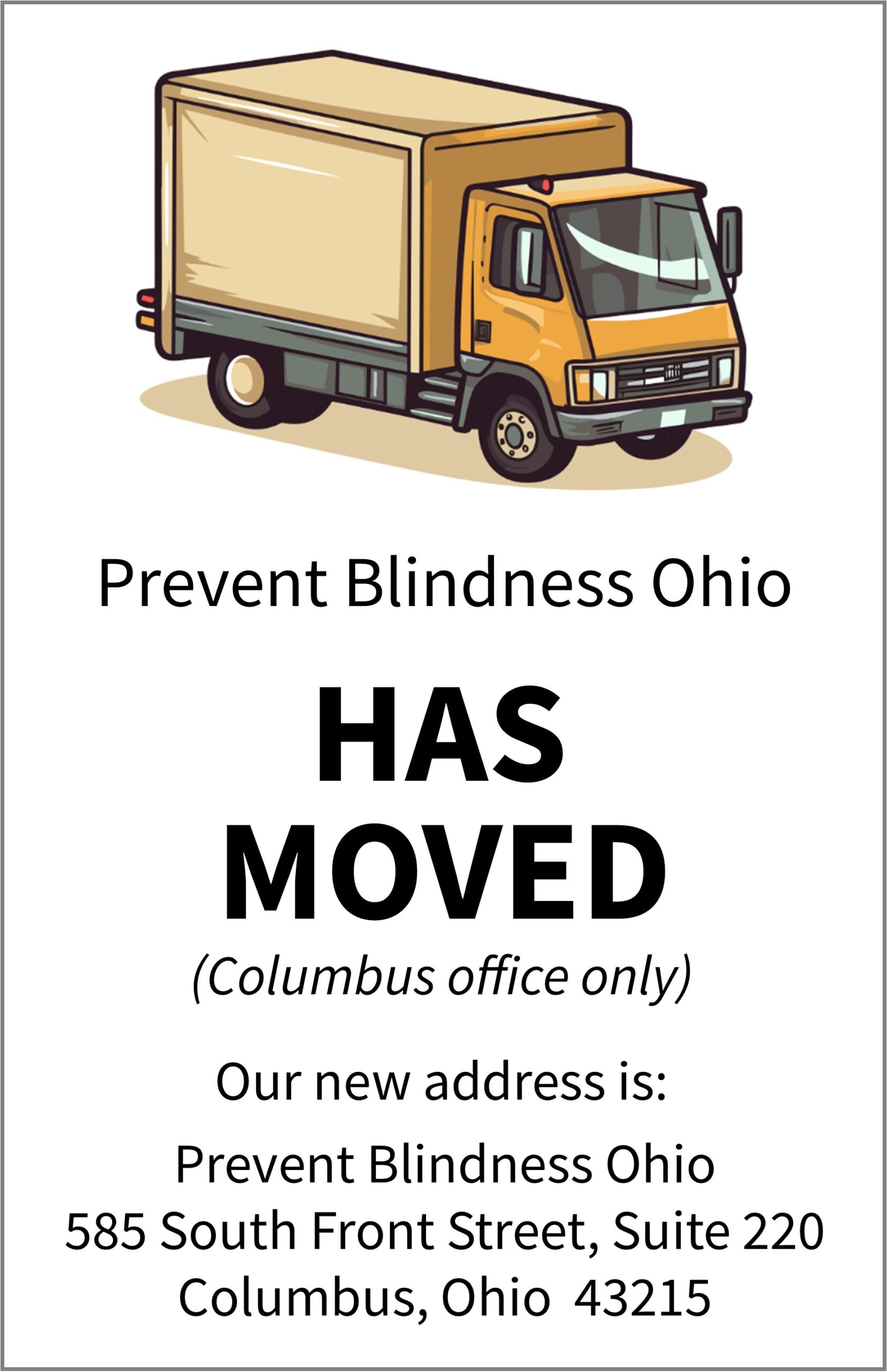Healthy Eyes and Good Vision are Important for Success in School
Prevent Blindness, Ohio Affiliate Offers Resources to Support Healthy Vision in Learning
Columbus, OH (August 3, 2020) Whether “back to school” is online or in-classroom, good vision plays an important role in your child’s physical, mental, and social development. Uncorrected vision problems can impair child development, interfere with learning, and even lead to permanent vision loss. Prevent Blindness encourages parents to add, “get my child’s eyes checked,” to their back-to-school list of things to do.
“Oftentimes, children do not realize they have vision problems, so they learn to compensate. Many students are misdiagnosed as having learning or behavioral disabilities when they may simply have a correctable vision problem,” said Sherry Williams, President & CEO of Prevent Blindness, Ohio Affiliate. “That’s why Prevent Blindness recommends a continuum of eye care throughout the lifespan beginning at birth and including regular vision screenings and comprehensive eye exams.”
Prevent Blindness has declared August as Children’s Eye Health and Safety Awareness month to inspire parents to make their child’s vision health a priority. The non-profit group has a variety of resources to help put children on the path to a lifetime of healthy vision:
- Prevent Blindness offers access to free eye exams and glasses, through its vision industry partnerships, to children who qualify for their Vision Care Outreach Program.
- Children’s Vision Screening Training programs provide instruction to health and childcare providers, as well as school nurses and educators on how to perform stereopsis, color vision and distance visual acuity screening, including detailed information on childhood eye diseases and disorders. Upon successful completion, each screener is eligible to receive free screening equipment.
- Vision and eye health curricula useable for both remote and classroom learning for ages pre-K to grade 12 are available on Wise About Eyes website: www.wiseabouteyes.org.
A new report published by Prevent Blindness entitled, Children’s Vision and Eye Health: A Snapshot of Current National Issues 2nd Edition found that:
- The annual U.S. economic costs of children’s vision disorders total $10 billion including $210 million for children ages 0-17 in Ohio.
- Uncorrected refractive errors (including significant near-sightedness, far-sightedness, and astigmatism) in infants and preschool-age children are associated with clinically identified deficits in cognitive and visual-motor functions that may have a negative impact on school readiness. Refractive errors make up 70% of decreased visual acuity in Asian and non-Hispanic White children.
- 39% of all children aged 5 and younger had ever had their vision tested with pictures, shapes or letters and 86% of children aged 6-11 had their vision tested with pictures, shapes or letters within the past 2 years.
- Non-Hispanic children aged 0-17 years, whose primary language at home was not English, had the lowest percentage of vision testing as compared to children in homes where English or Spanish were spoken.
- Children in families with greater household income are more likely to have received vision testing.
- Children in families with adults that have a college education, compared to those in homes with adults who did not complete high school or who have some college education, are more likely to have received vision testing.
You can be an advocate for your child’s vision and eye health:
- Make sure your child’s healthcare provider, educator, or public health program completes regular vision screenings.
- Take your child to an eye doctor (optometrist or ophthalmologist) if they do not pass a vision screening, if they are at increased risk of a vision problem due to developmental delay, medical condition, or a family history of vision problems, or if you have a concern about your child’s vision.
- Follow all treatment recommendations the eye doctor prescribes for your child- including eyeglasses, wearing an eye patch, medications, and/or surgical recommendations.
For more information on children’s eye health and safety, or financial assistance programs in Ohio, please call Prevent Blindness, Ohio Affiliate at (800) 301-2020 or visit pbohio.org and wiseabouteyes.org.
For more information about the Children’s Vision and Eye Health: A Snapshot of Current National Issues 2nd Edition report or children’s vision health topics, please visit: http://nationalcenter.preventblindness.org/.
About Prevent Blindness, Ohio Affiliate
Founded in 1908, Prevent Blindness is the nation’s leading volunteer eye health and safety organization dedicated to fighting blindness and saving sight. The Ohio Affiliate of Prevent Blindness serves all 88 Ohio counties, providing direct services to more than 1,000,000 Ohioans annually and educating millions of consumers about what they can do to protect and preserve their precious gift of sight. For more information or to contribute, call 800-301-2020. Visit us on the web at pbohio.org, Facebook at facebook.com/pbohio/, or Twitter at twitter.com/PB_Ohio.
###

